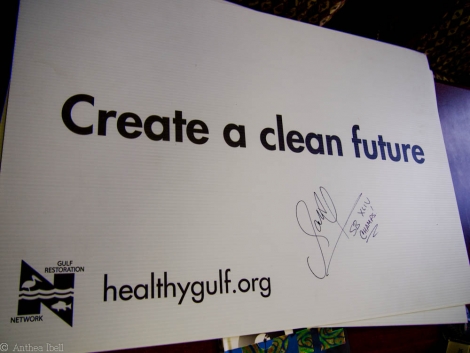On April 20, 2010 the explosion of the Deep Water Horizon well head in the North Eastern Gulf of Mexico was followed by the release of around 200 million gallons of oil over 86 days before the well head was plugged. Chemical dispersants were used in an attempt to control the disaster.
The Gulf Restoration Network (GRN) was set up in 1994 and has worked toward a healthy gulf since then. After the oil disaster in 2010 The GRN put a large focus on monitoring the official assessment and recovery plans as well as informing the public about the status of the Gulf. Natural Resource Damage Assessment (NRDA) Process is currently being carried out by the National Oceanic and Atmospheric Administration (NOAA) and is made up of three steps; 1) preliminary assessment, 2) injury assessment/restoration planning and 3) restoration implementation. More than a year after the disaster NOAA is currently in the second stage; injury assessment and restoration planning. This just shows how big the process is, because with such a large area effected and many different ecosystems needing recovery plans, the process is a long one.
After the spill, BP donated $1billion upfront towards the restoration of the Gulf. There is a Federal Oil Spill Liability Trust fund that was set up 1986 to provide economic relieve if such a disaster occurred. This fund is capped at $3million. Through the lawsuit process, BP will be liable to pay fines under the Clean Water Act; these fines could exceed $3.5billion – (this estimate is based on the maximum fine of $1,100 per barrel of oil released into the environment. BP’s total spill was estimated at 3.2 Million barrels). With the $3million cap on the Oil Spill Liability Trust fund, it has been proposed that the money from the fines goes straight back to the Gulf coast communities to assist with the restoration efforts.
The Gulf Future Campaign was organised by the Gulf Restoration Network and set up the Weeks Bay Principles. These principles cover the expectations from BP, ensure local participation in decision-making and conduct short and long-term monitoring.
I volunteered at the Gulf Restoration Network office in New Orleans. My main goal was to learn as much as I could about the Deep Water Horizon oil spill especially the current status of the Gulf. I was helping with blog reports on marine areas within the Gulf with biological importance, and summarising the areas that have been suggested for marine protected areas. I also learn about current scientific research studying where the oil has ended up. A recent study carried out by Dr Samantha Joye from the University of Georgia, Department of Marine Science has found that there are large quantities of oil on the sea floor surrounding the Deep Water Horizon well head. The radius of the ‘zone of devastation’ is unknown but her fieldwork has found tube worms filled with oil 40 miles (65km) from the well head.
In February of this year Kenneth Feinberg, the government-appointed administrator of the BP Deepwater Horizon Disaster Victim Compensation Fund, stated that the Gulf of Mexico will fully recover by 2012. This is unfortunately an unrealistic prediction.
Thank you to Ayn and Scott from the Gulf Restoration Network for all their support.
For more information visit;
On Wings of Care – http://onwingsofcare.org/,
For real time updates on environmental accidents – http://alerts.skytruth.org/


